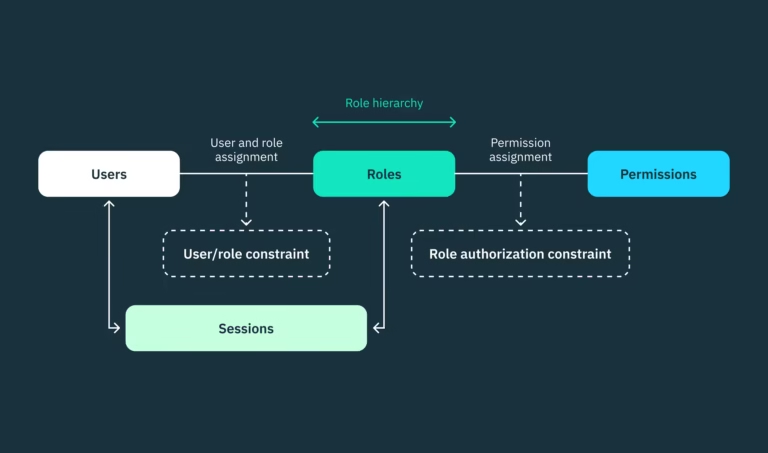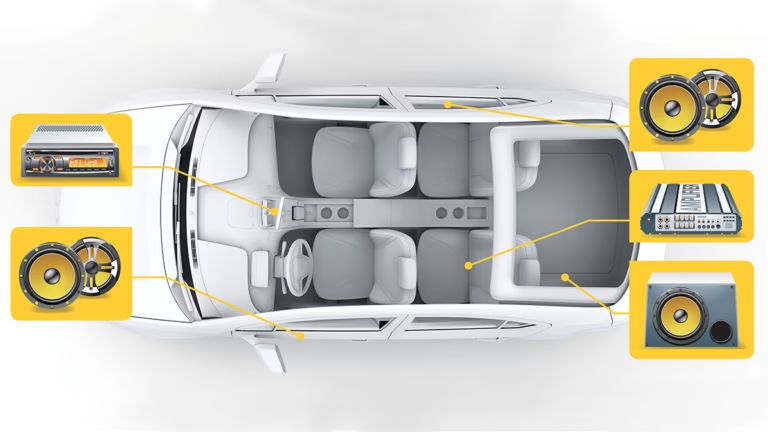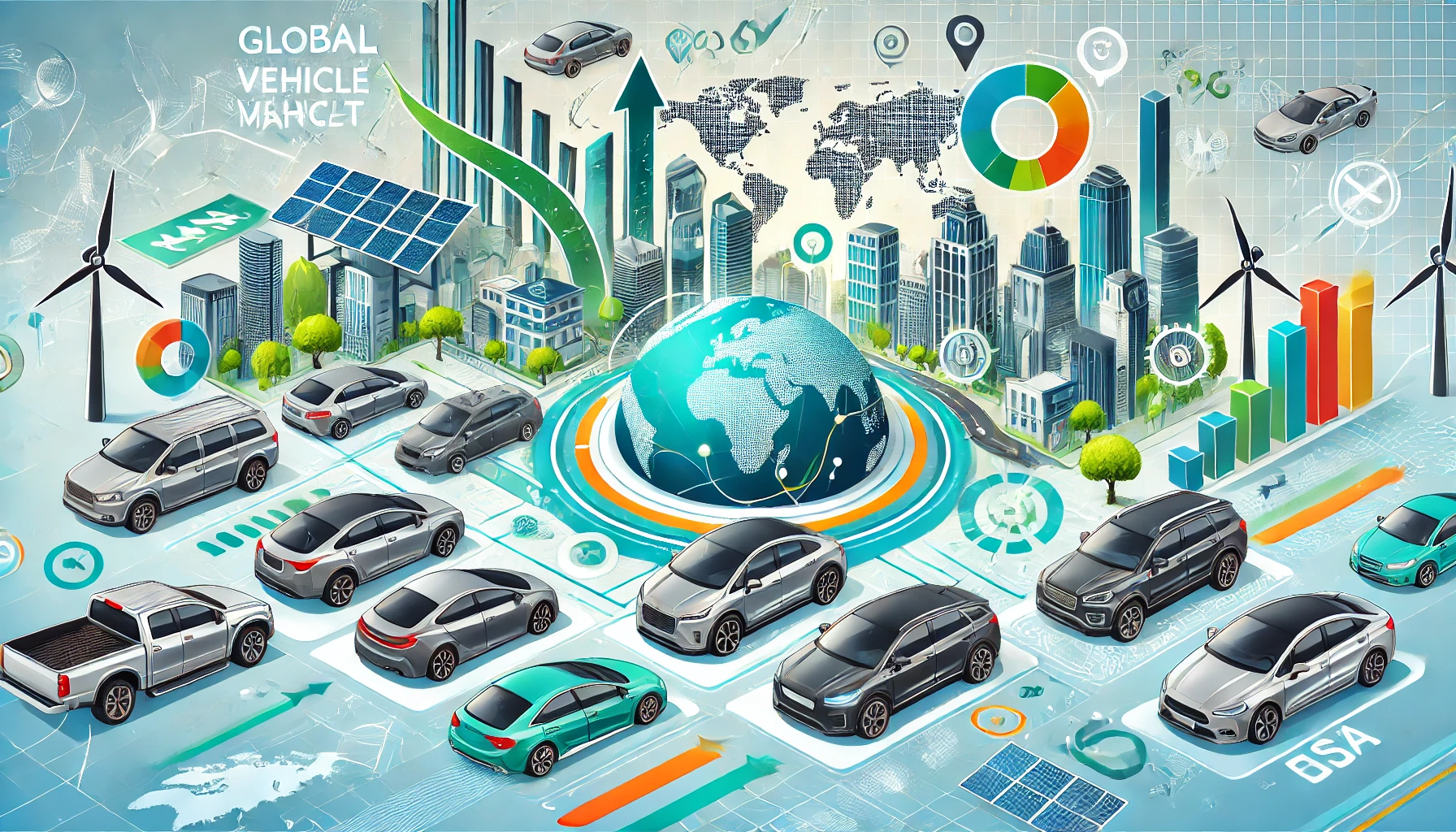
Introduction to China’s Passenger Vehicle Market
China’s passenger vehicle market represents a pivotal segment of the global automotive industry, showcasing remarkable growth and transformation over the past few decades. As the world’s largest automobile market, China has experienced an exponential increase in vehicle ownership, driven primarily by urbanization and economic development. In 2020, the number of registered passenger vehicles exceeded 250 million, a figure that continues to rise as more individuals gain access to personal transportation.
The rapid urbanization in China has reshaped transportation dynamics, with major cities experiencing significant influxes of residents. This has led to a burgeoning demand for private vehicles, as consumers seek to enhance their mobility options amid congested public transport systems. Furthermore, the Chinese government’s strategic initiatives to promote vehicle ownership among its citizens, in conjunction with infrastructure improvements, have also played a key role in supporting the expansion of the passenger vehicle market.
In addition to vehicle ownership, there is a growing emphasis on sustainable transportation solutions in response to increasing environmental concerns. The traditional reliance on fossil fuels has prompted a shift toward electric vehicles (EVs), with both consumers and manufacturers recognizing the need for greener alternatives. The Chinese government has implemented various policies and incentives aimed at accelerating the adoption of electric vehicles, including subsidies, charging infrastructure development, and regulations to phase out internal combustion engines. This commitment to sustainability is paramount, as the nation grapples with pollution challenges and aims to enhance air quality in cities.
Overall, China’s passenger vehicle market is not only significant due to its size but also as a laboratory for innovation and evolution in the automotive sector. The ongoing transition towards electric mobility reflects both changing consumer preferences and the urgent need for sustainable transportation solutions, marking a new era for automotive manufacturers and stakeholders alike.
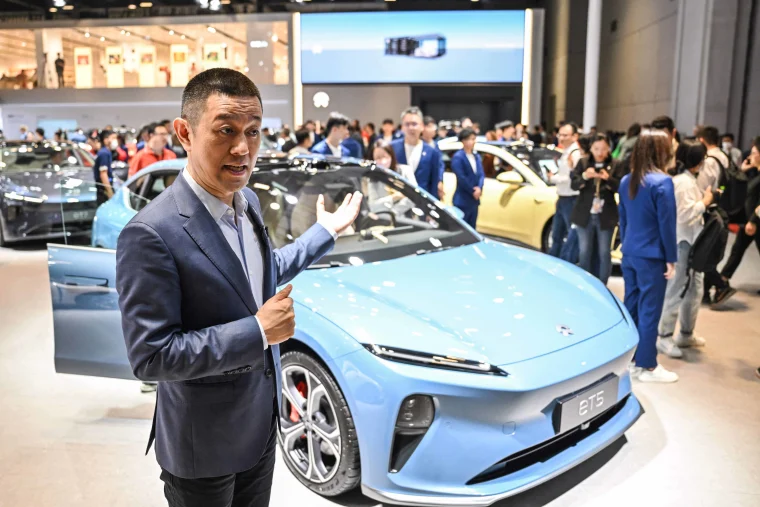
Overview of Electric Vehicles in China
In the past decade, China’s electric vehicle (EV) market has experienced significant evolution, establishing the nation as a global leader in electric mobility. Various factors, including government policies, market dynamics, and technological advancements, have contributed to this rapid transformation, positioning the country at the forefront of the EV movement.
The Chinese government has implemented a range of policies aimed at promoting EV adoption. These initiatives include generous subsidies for EV manufacturers and consumers, tax breaks, and investment in research and development. Additionally, local governments have established specific targets for EV sales and provided incentives such as reduced registration fees and exemptions from congestion charges. Collectively, these supportive measures create a conducive environment for the proliferation of electric vehicles in the market.
Market penetration figures illustrate a remarkable growth trajectory for electric vehicles in China. As of late 2023, EV sales accounted for over 30% of total passenger vehicle sales, reflecting a marked increase from approximately 5% a decade prior. This leap in penetration has been facilitated by the rising awareness of environmental concerns and the urgent need to reduce greenhouse gas emissions. Furthermore, the growing consumer demand for cleaner transportation options has further fueled the expansion of the electric vehicle sector in China.
Another crucial component in the successful embrace of electric mobility is the development of EV charging infrastructure. China has rapidly expanded its network of charging stations, which currently comprises over 2.8 million public charge points. This extensive infrastructure not only alleviates range anxiety among potential EV buyers but also ensures the convenience of charging, fostering greater consumer confidence in electric vehicles. As a result, the combination of favorable policies, market growth, and charging infrastructure has propelled China into a leadership role within the global electric vehicle landscape.
The Rise of China’s Electric Vehicle Market
- Government Policies and Incentives
- The Chinese government has provided robust incentives for EV adoption, including subsidies, tax exemptions, and preferential licensing for EVs in major cities. These policies have spurred both consumer interest and OEM innovation.
- The Made in China 2025 initiative and China’s New Energy Vehicle (NEV) mandate encourage manufacturers to produce electric and plug-in hybrid vehicles, pushing Chinese OEMs to lead the global EV transition.
- Demand Surge and Market Growth
- In 2023, over 30% of all new cars sold in China were electric, with demand driven by eco-conscious consumers and supportive infrastructure.
- Major metropolitan areas, such as Beijing and Shanghai, are early adopters due to air quality concerns, while smaller cities are also seeing increased adoption due to improved charging infrastructure.
- Competitive Landscape of Chinese OEMs
- Key players include BYD, NIO, Geely, Xpeng, and SAIC Motor, each with distinct approaches to the EV market. While some focus on high-end autonomous features, others emphasize affordability to capture a larger market share domestically and internationally.
Key Chinese OEMs Leading the EV Revolution
- BYD (Build Your Dreams)
- BYD has become a significant player in both battery manufacturing and EV production, offering affordable and high-quality electric models. BYD’s Blade Battery is known for its long life and safety features, helping BYD vehicles compete with international brands.
- In 2023, BYD surpassed Tesla as the world’s largest EV maker, with a lineup that spans sedans, SUVs, and commercial vehicles.
- NIO: Luxury and Autonomy
- NIO targets the luxury EV segment and focuses heavily on autonomous driving and connectivity. Its NIO Power network, which provides battery-swapping technology, differentiates it from other OEMs.
- The company’s NIO Autonomous Driving (NAD) system aims to offer one of the most advanced autonomous driving systems, competing with Tesla’s Autopilot and other global leaders.
- Xpeng Motors: Technology and Innovation
- Known for its advanced in-car technology and autonomous capabilities, Xpeng is a strong player in the mid-to-high-end EV market.
- Xpeng’s Xpilot system integrates vehicle-to-everything (V2X) communication, enabling sophisticated ADAS features, enhancing the driving experience and safety for users.
- Geely: Mass Market EV Expansion
- Geely, a diversified automaker with stakes in Volvo and Polestar, is expanding its EV lineup to appeal to a broader audience. Geely’s focus on affordable EVs and its robust supply chain provide it with a competitive edge for mass-market penetration.
- SAIC Motor: Partnerships and Scale
- As one of China’s largest automakers, SAIC Motor collaborates with global brands like General Motors and Volkswagen to build EVs. SAIC’s MG and Roewe brands have gained popularity in international markets, allowing SAIC to increase EV exports.
Innovations in Battery Technology
- Lithium-Iron Phosphate (LFP) and Solid-State Batteries
- Chinese OEMs, especially CATL (Contemporary Amperex Technology Co. Limited) and BYD, lead in the development of lithium-iron phosphate (LFP) batteries, which offer a balance of cost, safety, and energy density.
- With ongoing investments in solid-state battery technology, Chinese OEMs are positioning themselves at the forefront of next-generation battery development, which promises higher energy densities and improved safety.
- Battery-Swapping Technologies
- NIO’s battery-swapping stations provide drivers with fully charged batteries within minutes. This approach mitigates the need for extended charging stops and is particularly appealing for city dwellers with limited home charging options.
- Range and Efficiency Innovations
- Continuous improvements in energy density and efficiency are allowing Chinese EVs to achieve longer ranges on a single charge, rivaling the specifications of global competitors like Tesla.
Autonomous Driving and Connectivity
- Advancements in Autonomous Driving (AD)
- Chinese OEMs have made substantial strides in autonomous driving technology, with companies like NIO and Xpeng developing systems that leverage AI, machine learning, and advanced sensor technology.
- The development of NIO Autonomous Driving (NAD) and Xpeng’s Xpilot is geared towards providing Level 3 to Level 4 autonomous driving capabilities, enabling these cars to handle more complex driving environments.
- Connected Vehicle Ecosystems
- EVs from Chinese OEMs often include cutting-edge connected vehicle technologies, such as vehicle-to-everything (V2X) communication and in-car entertainment systems.
- Many vehicles also feature integration with mobile apps, allowing users to remotely monitor vehicle status, control charging schedules, and access over-the-air (OTA) software updates.
- 5G Integration and Edge Computing
- 5G technology has been rapidly integrated into EV models in China, facilitating faster data transfer and enhanced real-time processing capabilities, which are critical for autonomous driving.
- Edge computing allows autonomous vehicles to process data closer to the source, reducing latency and improving the efficiency of real-time decision-making systems.

Chinese OEMs’ Global Expansion Strategies
- Entering European and Southeast Asian Markets
- Chinese OEMs are increasingly entering markets in Europe and Southeast Asia, where EV adoption rates are rising. For example, BYD, Xpeng, and NIO have all established distribution networks in Europe.
- Southeast Asia presents an attractive market for affordable EV models, and Chinese OEMs are investing in local production and assembly facilities to capitalize on this demand.
- Strategic Partnerships and Alliances
- To accelerate global expansion, Chinese OEMs are forging partnerships with local companies in target markets. Geely’s alliance with Renault and SAIC’s collaboration with GM are examples of partnerships that enhance their international footprint.
- Adapting to Regional Preferences
- Chinese OEMs are tailoring EV models to meet the regulatory requirements and consumer preferences of each market. For instance, they are offering models with enhanced safety features and right-hand drive options for countries like the UK and Japan.
Challenges and Opportunities Ahead
- Competition from Global Automakers
- Despite their advancements, Chinese OEMs face competition from established players like Tesla, Volkswagen, and Toyota, who are ramping up their EV offerings in China and abroad.
- Battery Material Supply Chains
- The global demand for lithium, cobalt, and nickel places pressure on OEMs to secure supply chains for battery production. Chinese automakers are investing in mining and recycling to secure access to these essential materials.
- Regulatory and Political Barriers
- Chinese OEMs may encounter challenges related to trade policies and national security concerns, particularly in the United States and Europe, where governments have imposed stricter regulations on foreign EVs.
- Environmental Sustainability
- As EV production scales up, Chinese OEMs are focusing on sustainable practices, including battery recycling, to address concerns about resource depletion and waste management.
Looking to the Future: Chinese OEMs’ Roadmap to 2030
- Focus on Autonomous Vehicles
- By 2030, most major Chinese OEMs plan to have fully autonomous vehicles in production, with a focus on Level 4 and Level 5 autonomy for urban and intercity travel.
- Expansion of Charging Infrastructure
- OEMs are collaborating with government and private sector partners to expand charging infrastructure in key markets, aiming to make EV ownership more convenient for a broader range of consumers.
- Advancements in Battery Technology
- The next decade will see continued investment in high-density, low-cost batteries, with the goal of achieving a 1,000-km range on a single charge. Solid-state batteries are expected to be a game-changer, offering enhanced performance and safety.
- Environmental and Social Responsibility
- Chinese OEMs are increasingly focused on sustainability, integrating renewable energy sources in their production processes and exploring green solutions for battery disposal and recycling.
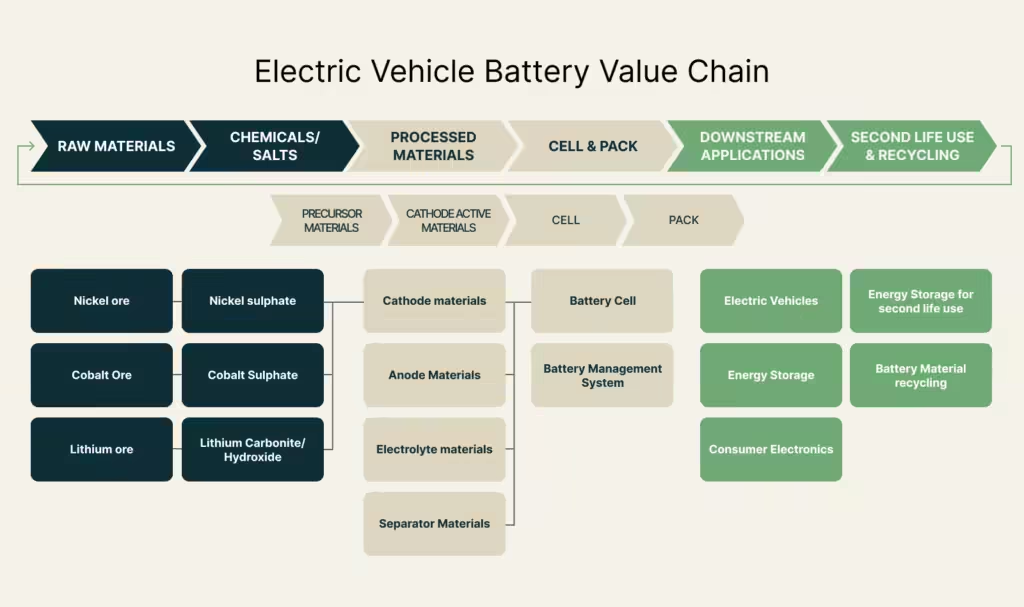
Key Players in the Market: OEMs Overview
As the landscape of electric vehicles (EVs) in China continues to evolve, several Original Equipment Manufacturers (OEMs) play a pivotal role in shaping its direction. Both domestic and international brands are increasingly investing in the development of electric powertrains and advanced technologies to meet the growing demand for sustainable transportation solutions. Among the most prominent domestic players are BYD, NIO, and Xpeng, each showcasing distinctive approaches to their product offerings and market strategies.
Batteries play a crucial role in the success of electric vehicles, and BYD has positioned itself as a leader in this domain. The company produces a range of EVs, from affordable models intended for mass-market consumers to luxurious, high-performance vehicles. Furthermore, BYD’s focus on vertical integration enables them to ensure the quality of their batteries while also controlling production costs, which is vital in the competitive landscape of China’s EV market.
NIO, on the other hand, has differentiated itself through its unique battery-swapping technology, allowing users to exchange depleted batteries for fully charged ones in a matter of minutes. This innovative solution addresses the common concern among consumers regarding charging infrastructure, thus enhancing user experience and convenience. NIO’s commitment to premium features and a robust digital ecosystem further solidifies its positioning in the EV space.
International OEMs, like Tesla, have also established a significant presence in China. Tesla’s Gigafactory in Shanghai not only satisfies local demand but also serves as a vital element in the company’s global supply chain. Offering a combination of cutting-edge technology and a strong brand reputation, Tesla continues to be a formidable competitor in the rapidly growing EV sector.
Moreover, partnerships and collaborations are rife among the players in this burgeoning market. For instance, traditional automotive manufacturers such as Volkswagen and General Motors are forming alliances with local tech firms to accelerate their EV initiatives. These partnerships aim to leverage local expertise and innovative technologies, ensuring these brands remain competitive in an increasingly electrified automotive landscape.
Consumer Trends and Preferences in China’s EV Market
The landscape of China’s electric vehicle (EV) market is rapidly evolving, driven by pronounced shifts in consumer attitudes and preferences. Increasing environmental consciousness among consumers has significantly influenced their purchasing decisions. As climate change becomes a paramount concern globally, many Chinese consumers are prioritizing sustainable alternatives. Electric vehicles, perceived as eco-friendly options, are gaining traction among environmentally aware buyers who seek to reduce their carbon footprints.
Cost considerations also play a critical role in shaping consumer behavior. As EV technology progresses, the initial purchase price of electric vehicles is becoming increasingly competitive compared to traditional combustion engines. Governmental subsidies, in the form of tax breaks and incentives, further enhance the allure of EVs. This financial support bolsters consumer confidence, allowing more buyers to consider electric vehicles as viable transportation options within their budget constraints.
Lifestyle preferences are another substantial factor affecting consumer choices in the EV market. Urbanization trends in China have led to growing numbers of consumers residing in metropolitan areas, where EVs are particularly advantageous. Features such as reduced noise pollution and lower operating costs resonate well with consumers who seek comfort and convenience. Moreover, the availability of advanced technology in contemporary electric vehicles, including robust infotainment systems and autonomous driving capabilities, appeals to tech-savvy buyers, influencing their preferences significantly.
Brand loyalty further complicates the landscape of consumer preferences, as established automotive brands continue to maintain a strong pull in the market. Chinese OEMs, alongside international players, strive to cultivate a loyal customer base by enhancing brand identity and delivering quality products that satisfy consumer expectations. The interplay of these factors – environmental awareness, cost-effectiveness, modern lifestyle compatibility, and brand loyalty – collectively shapes the dynamics of consumer purchasing behavior in China’s electric vehicle market.
Challenges Facing OEMs in the EV Sector
The electric vehicle (EV) market in China presents a complex landscape for original equipment manufacturers (OEMs), driven by rapid technological advancements and shifting consumer preferences. One of the primary challenges facing these established firms is the influx of nimble startups that are introducing innovative technologies and capturing market share rapidly. These startups often operate with lower overhead costs and a streamlined operational model, enabling them to respond swiftly to market demands while pushing the boundaries of design and functionality. As a result, OEMs must not only compete in terms of pricing but also enhance their technological offerings to retain consumer interest.
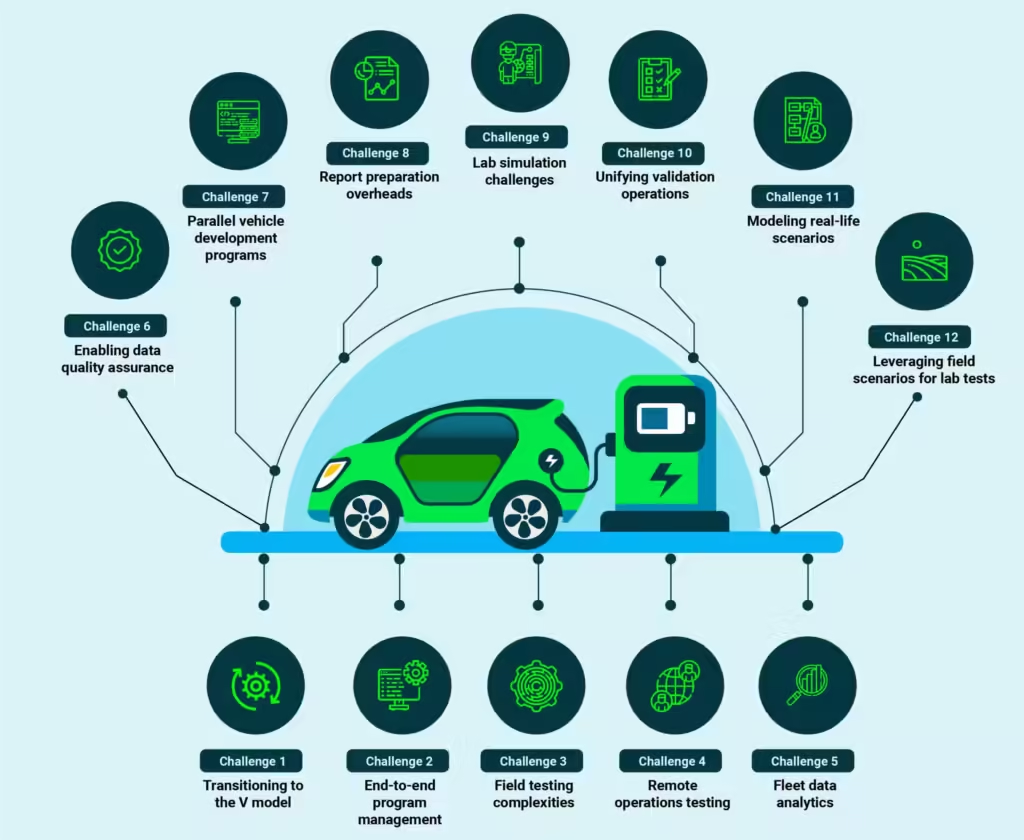
Supply chain issues further complicate the equation for OEMs. The global dependence on critical raw materials, such as lithium, cobalt, and nickel for battery production, has exposed vulnerabilities within the supply chain network. Fluctuations in commodity prices and geopolitical tensions can lead to significant delays, impacting production timelines and ultimately the availability of EV models to consumers. This creates a delicate balance that manufacturers must navigate to ensure consistent supply while maintaining cost efficiency.
In addition to logistical hurdles, OEMs face substantial technological challenges. As the EV market evolves, relentless innovation becomes paramount; manufacturers must constantly invest in research and development to stay ahead of competitors. Integrating cutting-edge features like advanced driver assistance systems (ADAS), connectivity, and autonomous driving capabilities demands a deep understanding of both engineering and consumer preferences. Moreover, regulatory barriers often add another layer of complexity as OEMs must comply with evolving environmental regulations and emission standards. Such compliance can necessitate additional investment and development, further narrowing profit margins. Thus, OEMs must embrace agility and a forward-thinking mindset to thrive in this competitive sector.
Future Trends: What to Expect in China’s EV Market
As the electric vehicle (EV) market progresses in China, several key trends are anticipated to shape its future landscape. One prominent trend is the increasing adoption of battery swapping technologies. This innovative approach allows drivers to exchange depleted batteries for fully charged ones at designated stations, significantly decreasing the downtime associated with conventional charging methods. Battery swapping could enhance consumer adoption of electric vehicles by alleviating range anxiety, thereby positioning China as a leader in battery technology and infrastructure development.
Another vital trend is the surge in research and development (R&D) investments from original equipment manufacturers (OEMs). Many domestic and international players are recognizing the importance of technological advancements in driving their competitive edge in the electric vehicle market. OEMs are focusing on enhancing battery efficiency and lifespan, improving vehicle performance, and integrating advanced features such as intelligent connectivity and autonomous driving capabilities. The commitment to R&D indicates a rapidly evolving EV industry characterized by continuous innovation and improved consumer offerings.
The potential consolidation within the automotive industry represents a crucial aspect of the future of electric vehicles. As market dynamics shift and competition intensifies, smaller EV companies may either merge with larger players or form strategic partnerships. This consolidation can lead to synergies, enabling players to share resources, reduce manufacturing costs, and accelerate the development of leading-edge technologies. Such collaboration will be essential as the EV market matures and addresses challenges related to scalability and production efficiency.
Lastly, the expansion of autonomous electric vehicles is projected to become a transformative trend in China’s EV landscape. With both governmental support and advancements in artificial intelligence, the deployment of self-driving technology in public transportation and personal vehicles is gaining momentum. As infrastructure and regulatory frameworks develop, the integration of autonomous vehicles is expected to redefine urban mobility and significantly impact the automotive ecosystem in China.
Conclusion: The Road Ahead for OEMs and EVs in China
As China’s passenger vehicle market evolves, the influence of Original Equipment Manufacturers (OEMs) in shaping the future of electric vehicles (EVs) becomes increasingly apparent. The landscape is characterized by a vibrant mix of both local and international players, each bringing unique strategies that cater to diverse consumer needs and preferences. The competition between these entities is fostering innovation and resilience, ultimately enhancing the overall growth trajectory of the EV market.
China’s commitment to electrification positions it as a leader in the global shift towards sustainable mobility. The government’s policies and incentives are designed to encourage the production and adoption of electric vehicles, ensuring a robust environment for OEMs to thrive. These trends suggest a strong potential for market expansion as consumer awareness and demand for environmentally responsible vehicles continue to rise. In this context, OEMs must be agile and responsive to changing market dynamics, leveraging advancements in technology and R&D to create competitively priced and high-performance EVs.
Moreover, maintaining a balance between local and international OEMs is crucial. Local manufacturers are rapidly gaining ground, often backed by advantageous government policies and significant investments in infrastructure. Conversely, international brands must adapt their approaches to meet the unique demands of the Chinese market. This competitive environment fosters collaboration and knowledge sharing, ultimately driving innovation at an unprecedented pace.
In conclusion, the journey ahead for OEMs in China’s EV market is promising yet complex. By prioritizing sustainable practices and adapting to evolving consumer expectations, these manufacturers can achieve a competitive advantage. The direction of China’s automotive industry will undeniably hinge on the collaboration and strategic decisions made by OEMs as they navigate this electrifying transformation.

